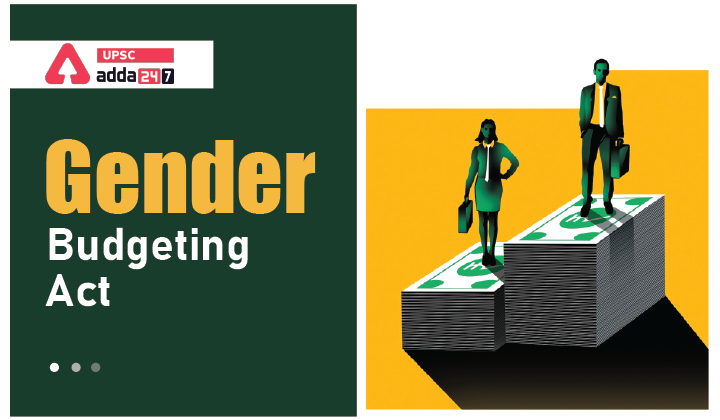Table of Contents
Gender Budgeting UPSC: Relevance
- GS 2: Welfare schemes for vulnerable sections of the population by the Centre and States and the performance of these schemes
Gender budgeting in India: Context
- Recently, Development, Monitoring and Evaluation Office (DMEO), an attached office under the NITI Aayog has called for a National Policy for Women and mainstreaming of gender-based budgeting by formulating the Gender Budgeting Act.
Gender budgeting act: Key points
- DMEO has called for incentivising women participation in all training and capacity building programmes to help India achieve gender equality with a special focus on areas like health, agriculture, environment and social inclusion.
- Specific incentives for women can be provided for promoting their participation and a certain percentage of women’s participation may be mandated to promote gender mainstreaming.
- DMEO has pushed for the Gender Budgeting Act to mainstream gender-based budgeting across all ministries and states/UTs
- Besides, it also recommended the governments to finalise the National Policy for Women after making the necessary amendments in the 2016 draft policy.
Gender budgeting act: Why needed?
- According to the recently published Global Gender Gap Report 2021 by the World Economic Forum, India’s rank fell by 28 places to 140 out of 156 countries with a score of 0.625 (out of 1) compared to 112 in 2020.
- According to the report, while the targeted programmes have helped to reduce sectoral inequalities, elimination of inequalities is still a distant dream.
What is gender budgeting?
- Gender budgeting is an application of gender mainstreaming in the budgetary process.
- It is an outcome-oriented expenditure allocation.
- It means a gender-based assessment of budgets, incorporating a gender perspective at all levels of the budgetary process and restructuring revenues and expenditures in order to promote gender equality.
- It is not only about the Budget and it is not just a one-time activity. It is a continuous process that must be applied to all levels and stages of the policy process.
- However, it recognises that the Budget is a powerful tool that can reduce the vulnerability of women and girls and transform their situation.



 TSPSC Group 1 Question Paper 2024, Downl...
TSPSC Group 1 Question Paper 2024, Downl...
 TSPSC Group 1 Answer key 2024 Out, Downl...
TSPSC Group 1 Answer key 2024 Out, Downl...
 UPSC Prelims 2024 Question Paper, Downlo...
UPSC Prelims 2024 Question Paper, Downlo...





